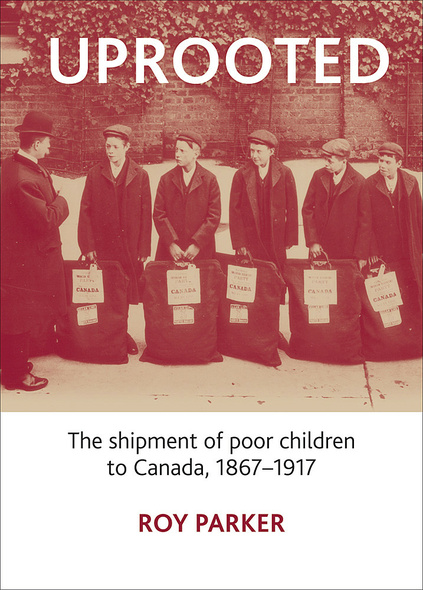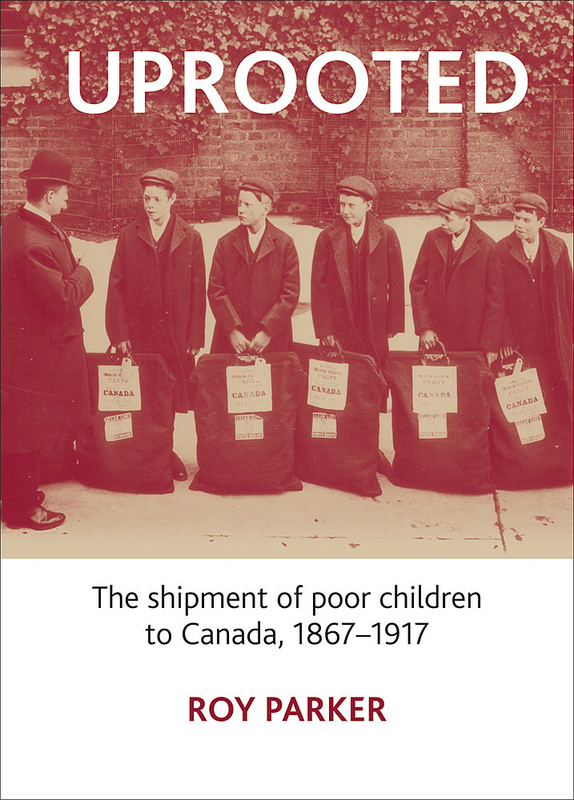Some 80,000 British children - many of them under the age of ten -were shipped from Britain to Canada by Poor Law authorities andvoluntary bodies during the 50 years following Confederation in 1867.How did this come about? What were the motives and methods of thepeople involved in both countries? Why did it come to an end? Whateffects did it have on the children involved and what eventually becameof them? These are the questions Roy Parker explores in a meticulouslyresearched work that brings together economic, political, social,medical, legal, administrative and religious aspects of the story inBritain and Canada. He concludes with a moving review of evidence frommore recent survivors of child migration, discussing the lifelongeffects of their experiences with the help of modern psychologicalinsights.
His book - humane and highly professional - will capture and holdthe interest of many: the academic, the practitioner and the generalreader; and they will include the relatives and descendants, both inBritain and Canada, of the children around whom this studyrevolves.
This is an excellent historical analysis of the push and pull factors that not long ago engineered the transportation of thousands of children to live with homestead families or in institutions in Canada.
This is a sober, scholarly study of the forces that fed and restricted the forced emigration of British children to Canada, largely to Canadian farms. It does not neglect the most emotionally poignant stories, but nor does it dwell on them. … This is truly an interdisciplinary study, giving due weight to a stunning number of factors….
Part I: Setting the Scene
one The Background
I Prelude
II The Pressure for Emigration Grows
III The Ups and Downs of Official Policies
IV Maria Rye’s Appearance on the Scene
V The Scene is Set
two Early Initiatives
I London: Rye, Macpherson and Stephenson
II Liverpool: Nugent and Birt
III Quarrier and Glasgow
IV Middlemore in Birmingham
V The Networks
Part II: Setbacks and Anxieties
three Checks and Balances
I Orphans,Waifs, Strays and the Deserted
II Asking the Children
III The Pros and Cons of Emigration
IV Growing Anxieties
V The Doyle Inquiry and the Moratorium
four The Issue of Inspection
I The Canadian Answer to Doyle’s Report
II The Response of the Local Government Board
III A Second Canadian Offer
IV A Particular Case
V Eventually Something is Heard of the Children
Part III: The Field Expands
five The Second Wave of Organised Protestant ChildEmigration
I Enter Barnardo
II Shaw and Manchester
III Fegan’s boys
IV The Established Church
six The Catholic response
I The Context
II Liverpool: Preserving the Faith
III Westminster and the French Connection
IV Southwark and Different Policies for Girls and Boys
V Salford Records the Details but Soon Withdraws
VI The Amalgamation and New Policies
VII The Disapproved
VIII The main features
seven The ‘Unorganised’ Emigrationists
I The Examples
II Emma Stirling Confronts the Law
III The Pady Scandal
IV Confusion:The Bristol Emigration Society
V The General Pattern
Part IV: The Canadian Dimension
eight Canadian Demand for Child Labour
I The Farm Family
II Girls as Domestic Servants
III Ages and Wages
IV The School Lottery
nine Canadian Opposition to Child Immigration
I The Setting
II Organised Labour Takes a Stand
III The Disquiet of the Civic Authorities and the Charities
IV The Doctors Express Alarm
V Opposition in the Press
VI Needed but Not Wanted?
ten The Management of the Opposition in Canada
I May and June 1888
II Developments after 1888
III A Charge Repudiated
Part V: Ambiguities and Obfuscation
eleven The Reformatories and Industrial Schools
I The Background
II Rising Unease
III The Royal Commission and Child Emigration
IV The Repercussions of the Royal Commission’sReport
V Canadian Vacillation
VI Uneasy Politics
Part VI: The Children and Their Parents
twelve What Befell the Children
I Letters from Canada
II The Unwanted and the Runaways
III Removing the Ill-treated
IV Seduction, Sexual Assault and Rape
V Repatriation and Deportation
VI Citizenship
Thirteen Parents’ Rights, Consent and Legislation
I A Changing Pattern
II The Campaign to Limit Parental Rights
III The Legislation
IV Parents’ Complaints and Where They Stood
Part VII: A Chapter Closes
fourteen Into the Twentieth Century
I The Quest for Improvements
II Many or Few?
III The Newcomers
Part VIII: A Review
fifteen Explanation and Assessment
I Why?
II Outcomes and Evaluation
III Hearing from the Survivors
IV Later Voices
V Confirmation
VI A Reckoning
Notes
References
Index





